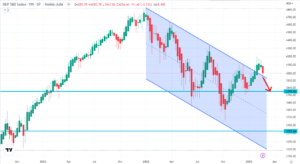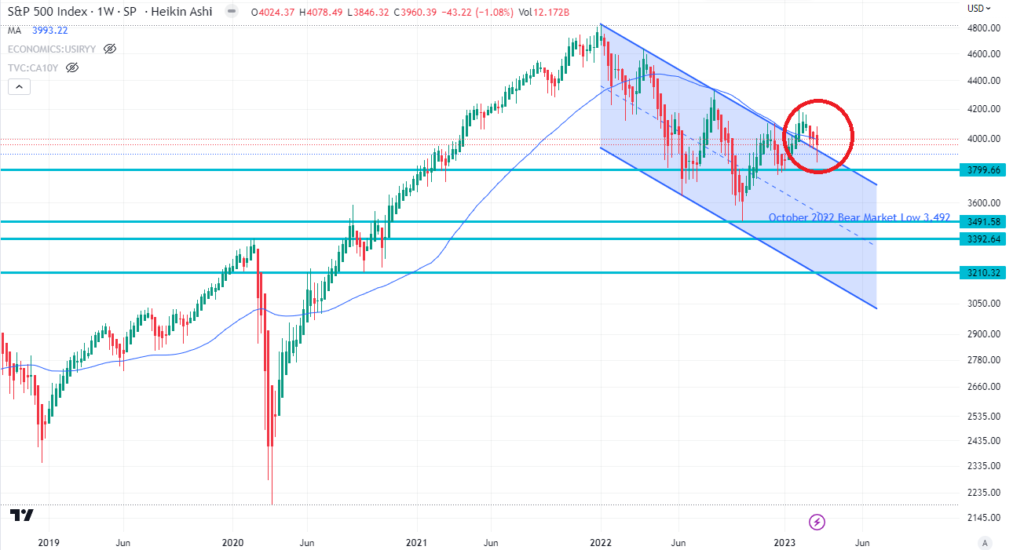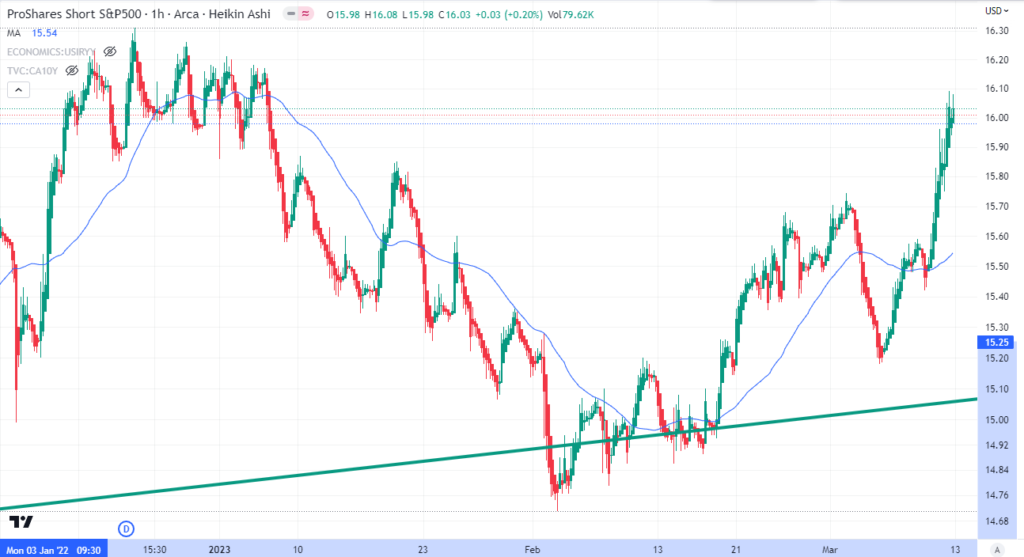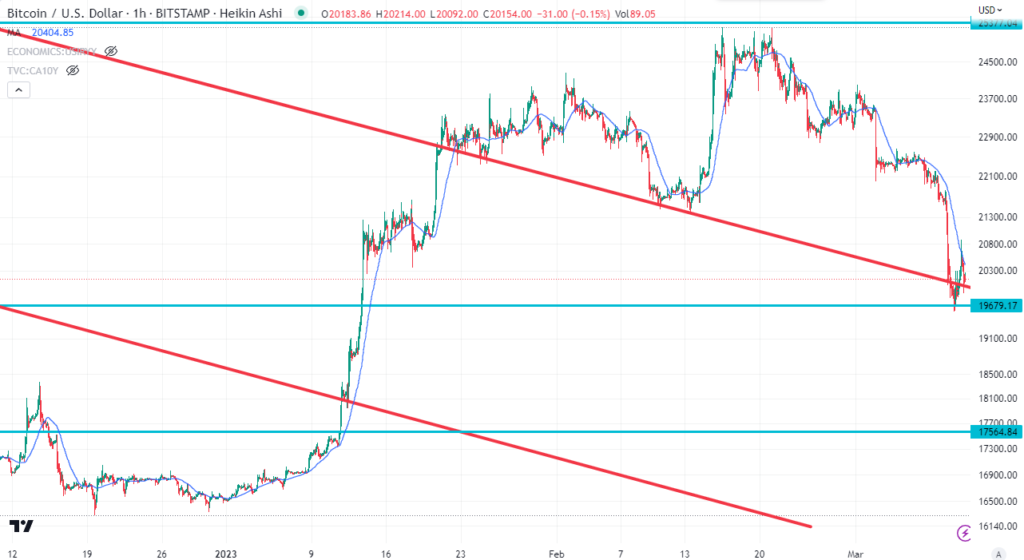The FDIC has placed Silicon Valley Bank into receivership. That’s a big deal. If you are a depositor with $250,000 or less in deposits, no problem; you’ll get your money back on Monday. For any deposits over $250,000, good luck. You will get some of your money back as assets are liquidated, but it may not be everything, and it may not be soon.
Silicon Valley Bank (SVB) was the banker to the tech sector and in particular, the crypto sector. High-tech start-ups would go to the Venture Capital arm of SVB to get funding, and one of the funding conditions was that “you bank with SVB.” So many of their customers had no choice; they had to bank with SVB.
With the significant increase in interest rates over the last year, SVB’s balance sheet became mismatched. They were receiving less on their investments than they needed to be paying out. If they could have raised more capital, they likely would have survived, but they didn’t.
If you bought a bond, Treasury Bill, or Mortgage-Backed Security when interest rates were close to zero, the yield is nearly zero. No interest rates are much higher, so no one will buy that security from you for face value because they can get a better yield elsewhere. If you hold the security until maturity, there is no problem, you recover your initial investment. But if you have a cash crunch and need to sell now, you have to sell at a big discount, and that’s what happened to SVB.
Implications of the SVB Collapse
The first implication is that the market tanked.
On February 25, 2023, I published The Correction Continues, and I said this:
Last week I discussed whether the bear market was over, or if there was more pain to come.
The answer: more pain.
The down channel that started in January 2022 on the SPX appeared to have been broken in February, but the decline of this past week shows that it was likely a false breakout. I expect the market to return to it’s previous support level around 3,800, and I expect it to happen in the next two weeks.

I’m playing it by shorting the market through SH – PROSHARES SHORT SP500-NEW, a very risky, short term security. SH is NOT a long term hold. It’s value degrades over time, so I expect to sell my shares before mid-March, hopefully at a profit. We shall see.
My other investment is in bonds, on the assumption that interest rates have peaked, and will be trending down.
See that little down arrow in the chart above? Here’s the same chart today:

As you can see, after a false break out, the SPX is back down into its down channel.
The bear market continues.
When is a dangerous time for the market? The middle of March.
When was the low in the pandemic crises of 2020?
March 23, 2020.
That does not bode well for the next two weeks.
Here’s the same chart, showing the Fibonacci retracement levels.

The October 2022 bear market low was 3,492.58, and that level is almost a perfect Fibonacci retracement level from the March 2020 bottom to the January 2022 top.
And, as you can see on the chart, a Fibonacci 61.8% retracement takes the market down to around 3,200.
So, watch out below.
So, where do you put your money?
As I mentioned in the quote above:
I’m playing it by shorting the market through SH – PROSHARES SHORT SP500-NEW, a very risky, short term security. SH is NOT a long term hold. It’s value degrades over time, so I expect to sell my shares before mid-March, hopefully at a profit. We shall see.
Clearly, I have not sold my shares before mid-March.

For now, I’m holding in the anticipation of further weakness. But, as you can see from the chart, we are getting up to resistance levels, so we’ll see what happens.
Where else can you put your money?
Gold will likely do well this year, but we haven’t seen the big pop upward yet, although it is at a one-month high.
Bitcoin
Bitcoin is getting trashed. That makes sense. If the crypto companies had their fiat cash in SVB, and now they need liquidity to make payroll next week, they sell their Bitcoin to raise money.

The chart does not look good. The $20,000 level is likely to fall, and then $17,564 and lower is in play.
Speculators are faced with a difficult choice: Leave your cash in a bank, that might fail, or convert it to Bitcoin so you can hold it yourself, but you may lose 50% of it’s value over the next few months as the bear market concludes.
Tough call.
For now, I’m content to be in Canadian cash and bonds. I’ll ride it out.
That’s the plan. Next week should be interesting. See you in a week.
What the Silicon Valley Bank Collapse Means For You
by JDH on March 11, 2023
The FDIC has placed Silicon Valley Bank into receivership. That’s a big deal. If you are a depositor with $250,000 or less in deposits, no problem; you’ll get your money back on Monday. For any deposits over $250,000, good luck. You will get some of your money back as assets are liquidated, but it may not be everything, and it may not be soon.
Silicon Valley Bank (SVB) was the banker to the tech sector and in particular, the crypto sector. High-tech start-ups would go to the Venture Capital arm of SVB to get funding, and one of the funding conditions was that “you bank with SVB.” So many of their customers had no choice; they had to bank with SVB.
With the significant increase in interest rates over the last year, SVB’s balance sheet became mismatched. They were receiving less on their investments than they needed to be paying out. If they could have raised more capital, they likely would have survived, but they didn’t.
If you bought a bond, Treasury Bill, or Mortgage-Backed Security when interest rates were close to zero, the yield is nearly zero. No interest rates are much higher, so no one will buy that security from you for face value because they can get a better yield elsewhere. If you hold the security until maturity, there is no problem, you recover your initial investment. But if you have a cash crunch and need to sell now, you have to sell at a big discount, and that’s what happened to SVB.
Implications of the SVB Collapse
The first implication is that the market tanked.
On February 25, 2023, I published The Correction Continues, and I said this:
See that little down arrow in the chart above? Here’s the same chart today:
As you can see, after a false break out, the SPX is back down into its down channel.
The bear market continues.
When is a dangerous time for the market? The middle of March.
When was the low in the pandemic crises of 2020?
March 23, 2020.
That does not bode well for the next two weeks.
Here’s the same chart, showing the Fibonacci retracement levels.
The October 2022 bear market low was 3,492.58, and that level is almost a perfect Fibonacci retracement level from the March 2020 bottom to the January 2022 top.
And, as you can see on the chart, a Fibonacci 61.8% retracement takes the market down to around 3,200.
So, watch out below.
So, where do you put your money?
As I mentioned in the quote above:
Clearly, I have not sold my shares before mid-March.
For now, I’m holding in the anticipation of further weakness. But, as you can see from the chart, we are getting up to resistance levels, so we’ll see what happens.
Where else can you put your money?
Gold will likely do well this year, but we haven’t seen the big pop upward yet, although it is at a one-month high.
Bitcoin
Bitcoin is getting trashed. That makes sense. If the crypto companies had their fiat cash in SVB, and now they need liquidity to make payroll next week, they sell their Bitcoin to raise money.
The chart does not look good. The $20,000 level is likely to fall, and then $17,564 and lower is in play.
Speculators are faced with a difficult choice: Leave your cash in a bank, that might fail, or convert it to Bitcoin so you can hold it yourself, but you may lose 50% of it’s value over the next few months as the bear market concludes.
Tough call.
For now, I’m content to be in Canadian cash and bonds. I’ll ride it out.
That’s the plan. Next week should be interesting. See you in a week.